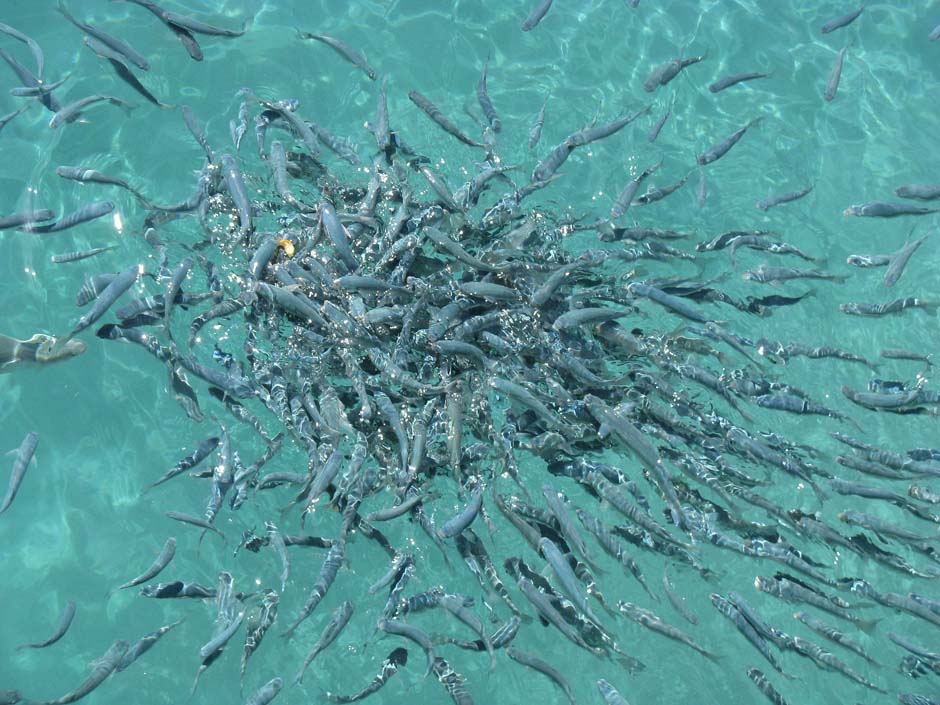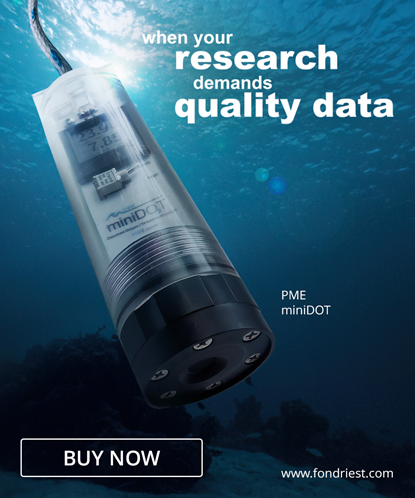Dissolved Oxygen: The most important measurement for aquaculture

Dissolved oxygen is vital to any healthy, life-sustaining aquatic system. And that includes aquaculture ponds and enclosures.
The effects of low dissolved oxygen on fish are many and never good. Ethical and sustainable (not to mention profitable) aquaculture relies on sufficient dissolved oxygen levels. There are plenty of ways to influence dissolved oxygen levels and just as many ways to measure them. In all of this, one thing is clear: dissolved oxygen is the most important measurement in assessing the health of an aquaculture system.
Dissolved oxygen grows bigger fish
The United States Geological Survey regularly takes dissolved oxygen measurements in the course of their monitoring of water bodies. It’s one of the key measurements they use to gauge a lake’s or a stream’s health.
That’s because all aquatic life needs dissolved oxygen to survive and adequate levels of it to thrive. While the USGS doesn’t monitor water quality to ensure the most profitable harvest of fish, the principles apply to aquaculture settings as well.
Low dissolved oxygen can make fish less efficient in turning food into weight. In multiple studies, the amount of food fish ate (feed intake) and the amount of weight they gained from that food (feed conversion) were at their highest levels when dissolved oxygen was at its highest level. This effect (or something similar) has been shown in halibut, turbot, mulloway and snakefish.
For many aquaculture operations, feed is the single largest operating cost at 20% of all costs. Other sources suggest it could be as much as one third of all costs. Proper management of dissolved oxygen, which starts with accurate measurement of dissolved oxygen, ensures you’re getting the most bang for your buck.
Other factors impact feed intake, feed conversion and fish growth as well. Water temperature, adequate food supply, and pathogens, contaminants or toxins could all impact these measures. But, low dissolved oxygen exacerbates the effects of all these issues, too.
Dissolved oxygen points to other problems
Low dissolved oxygen is always a problem, but sometimes it’s a symptom of another problem.
Some sustainable aquaculture certification schemes require aquaculturists to stop or slow feeding fish when dissolved oxygen dips below a certain level (it varies from fish to fish). That’s because decaying organic matter and the bacteria that help it decompose require oxygen. In those cases, low dissolved oxygen could be a symptom of overfeeding. This means food is wasted on two levels: the excess that’s not eaten and the waste that occurs when fish can’t efficiently turn the food they eat into weight. Measuring dissolved oxygen could be a key step in dialing in your feeding to the optimal level. It could also mean you need to clean any enclosures a bit more regularly, whichever keeps decomposing organic material from becoming a problem.
Monitoring dissolved oxygen can warn of coming disaster
Dissolved oxygen levels follow a daily cycle. Dissolved oxygen has a natural high and low every 24 hours, usually around sunset and sunrise as photosynthesis starts and stops. Although levels peak and bottom out every day, the long term trend over multiple days shows that dissolved oxygen, over all, is increasing or decreasing.
While both an increasing and decreasing trend in oxygen are valuable pieces of information, identifying a trend toward lower dissolved oxygen can help you predict dangerously low dissolved oxygen levels and mitigate them before fish feel the ill effects or die.
Many organizations that certify sustainable or ethical aquaculture require twice daily dissolved oxygen measurement. It’s for this very reason. Tracking trends in dissolved oxygen can avoid situations of unnecessary and harmful stress on fish.
Beyond fish welfare, dissolved oxygen is important for healthy, growing fish, efficient use of food, and identifying other excesses or shortcomings in an aquaculture operation. With all this and more hanging on accurate and timely measurement of dissolved oxygen, it’s worth putting some thought into what method of monitoring best fits your needs. If dissolved oxygen is the most important water quality measurement for aquaculture, you want to get it right.
Top image: Dissolved oxygen is one of the most important measurements to a successful aquaculture operation. Credit: David Rochford from Pixabay



Pingback: Underwater Cameras: A must-have tool for offshore aquaculture - The FishSens Blog